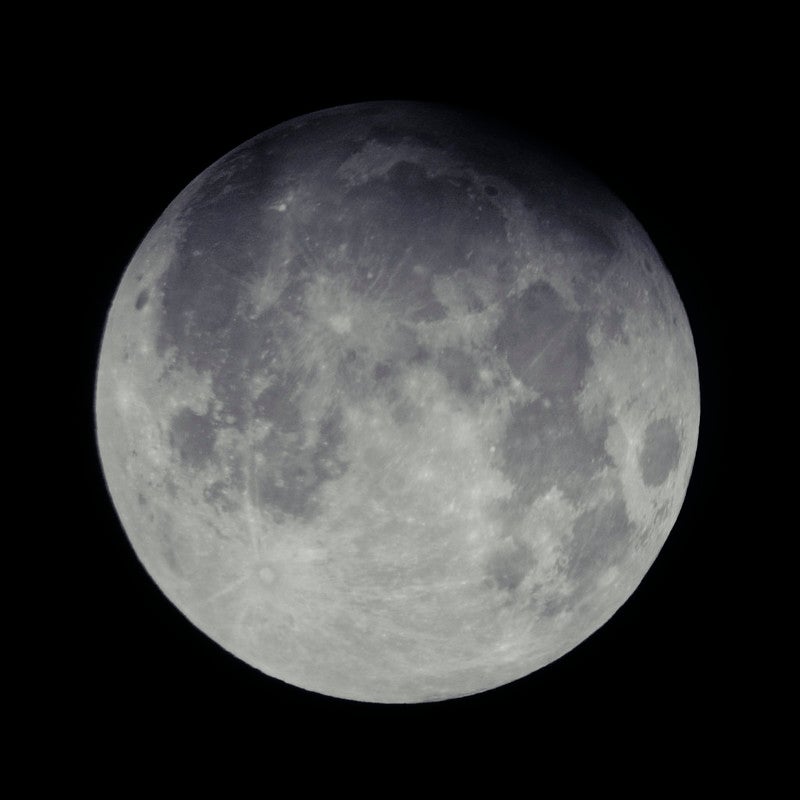
This week we'll be focusing on the Moon, as Tuesday brings us three amazing events.
The September Full Moon occurs on Tuesday night, bringing us the Harvest Moon of the year and the second of four stunning Supermoons of 2024.
At the same time, visible across much of the globe (including the entire continental United States), the full Moon will be partially eclipsed as it passes through part of Earth's shadow on Tuesday night.
Plus, if you're up early and ready to watch the action on Tuesday morning, the Moon will pass in front of the planet Saturn in the predawn sky for those in the western half of the U.S. (including Hawaii) and Canada. All other observers will still see the two objects together in the morning twilight.
A partial lunar eclipse
Shortly before the Moon officially reaches its full phase, something interesting begins to happen. It starts to slide into the shadow of the Earth, as seen from the Moon, as cosmic geometry aligns the Sun, Earth, and Moon into the correct position.
The eclipse officially begins at 8:41 p.m. EDT, when the Moon slides into the outermost region of Earth's shadow, called the penumbra. Although at maximum eclipse the Moon will be completely within the penumbra, only a small portion of the lunar limb will pass through the darker central region of Earth's shadow, called the umbra; that's why it's only a partial eclipse. For a total lunar eclipse to occur, the Moon must also pass completely through the umbra.
The Moon's northern regions will begin to darken compared to the rest of its bright face as the Moon continues its journey through the shadow. Our satellite first begins to pass into the darker umbra at 10:12 PM EDT. Then, you'll really want to focus on our satellite's northern edge — a small strip there should begin to completely darken as the eclipse progresses. The partial eclipse overall lasts a little over an hour, with the maximum eclipse occurring at 10:45 PM EDT, when only 8 percent of the Moon is within the umbra. After this, the eclipse will continue in reverse, as the northern edge slides out of the darker umbra and then the penumbra, clearing up completely. The Moon fully exits the penumbra at 12:47 AM EDT (now early on the 18th only for those in the Eastern Time Zone), bringing the eclipse to an end.
RELATED: Why can we still see the disk of the Moon during a total lunar eclipse?
Unlike solar eclipses, lunar eclipses of any kind can be observed without any problems with the naked eye—no special equipment or protection is needed! Binoculars can help you better see the area of the Moon that is darkening as the eclipse progresses, but getting too close (such as with a telescope) won't help you much in seeing the eclipse. It's best to observe it unaided, though of course using a telescope will allow you to explore all the unique and amazing terrain the Moon has to offer. Keep in mind, though, that doing so during a full Moon is more difficult than during other phases, as shadows are shorter because the Sun is high overhead—this is lunar “noon.”
Lunar eclipses happen slowly, giving you plenty of time to observe them in weather that will hopefully be mild and pleasant. You can take some time to observe other objects in the sky between each glance at the Moon, or you can simply go outside from time to time during the eclipse to check on its progress without fear of missing much if you can't observe it all the time.
Overall, this eclipse will last about 4 hours from start to finish, with again the partial phase (the most spectacular part) lasting just over an hour. It's true that this partial lunar eclipse won't cause many dramatic visible changes to most of the Moon, nor should it change the color of the Moon, as can happen during a Blood Moon or a total lunar eclipse. Nonetheless, it's an incredible opportunity to see celestial geometry in action and offers a small preview of the total lunar eclipse coming to North and South America. next September, which will be a much more striking event.
The full harvest supermoon
Just as solar eclipses can only occur when the Moon is New, lunar eclipses can only occur when the Moon is Full. This month's Full Moon officially occurs at 10:34 p.m. EDT.
The September full moon is usually called the Corn Moon, but this full moon has a special name: the Harvest Moon. This is the name given to the full moon closest to the autumn equinox, which occurs next week on September 22.
This month's Full Moon will also look particularly large and bright. That's because it's a Supermoon, or Full Moon that occurs around the same time our satellite reaches perigee, the closest point to Earth in its orbit. The Moon will officially reach perigee tomorrow morning (the 18th) at 9:22 AM EDT, when it will be 227,007 miles (365,332 km) away.
This is the second of four consecutive Supermoons in 2024, which began with the August Full Moon and will continue with the October and November Full Moons as well.
Related: Full Moon Calendar 2024: When to see the Full Moon and phases
Bonus: Lunar occultation of Saturn
This week's supermoon and lunar eclipse will be easy to observe for anyone willing to get outdoors at night. But for those early birds who look to the sky on Tuesday, tomorrowBut there is still more to discover, as the Moon will occult Saturn in the constellation Aquarius, visible from parts of North America and also from Hawaii.
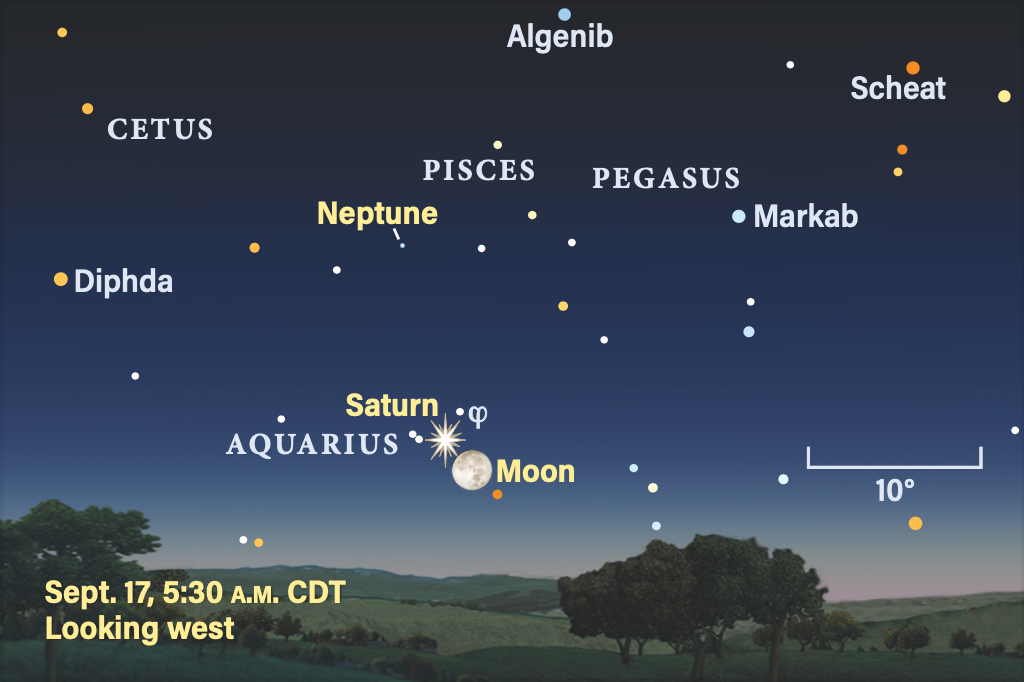
The occultation begins around 5 a.m. MDT Tuesday morning, when the Moon and Saturn are just 10° above the western horizon in the central U.S. and about 20° high over the West Coast (note that it's an hour earlier here: 4 a.m. PDT). The time when Saturn will disappear depends greatly on your location, so check the International Occultation Timing Association Website to time the disappearance and reappearance of various cities.
Saturn, at magnitude 0.6, is easily visible to the naked eye, though it will appear fainter and harder to see as the bright, nearly full Moon approaches. For the best view, watch for the actual occultation — when Saturn slips behind the Moon's leading edge — with binoculars or a telescope. It will take about 30 seconds for the planet to completely disappear.
Observers in eastern North America will never see the Moon cross in front of Saturn, but they will see the two close together in the morning sky, setting in the west shortly before the Sun rises in the east. From the East Coast, the Moon will pass 0.3° north of Saturn at 6 a.m. EDT.
So whether you're an early or late riser (or willing to sacrifice some sleep and do both), the Moon certainly has something to show you this Tuesday.
Below are the sunrise, sunset, moonrise, and moonset times for the 17th, in local time from 40° N 90° W. Moonrise is indicated at 12:00 pm local time from the same location. Please note that these times may vary slightly depending on your location.
Tuesday, September 17th
Sunrise: 6:43 AM
Sunset: 19:04 hours
Moonrise: 19:03
Moonset: 5:58 AM
Moon phase: Full
This information is adapted from our Sky This Week Columnwhich offers weekly watching tips and news and is published every Friday.







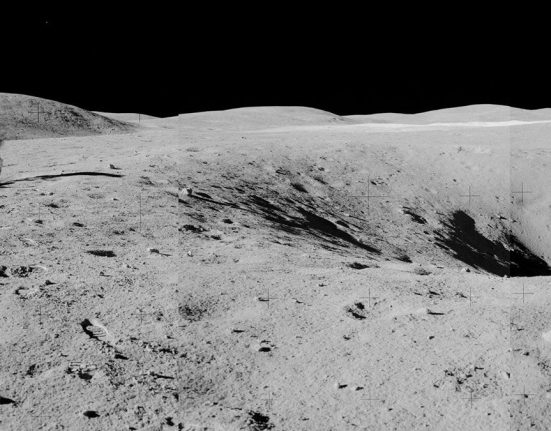
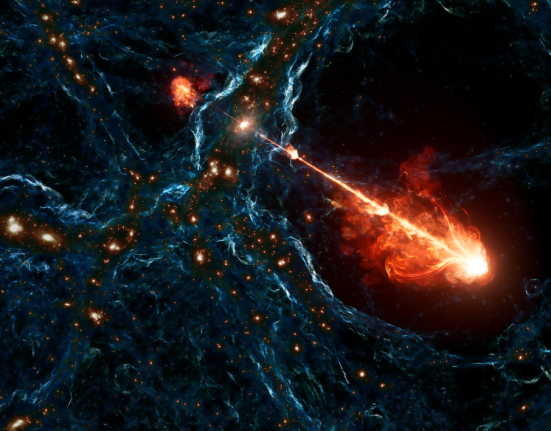
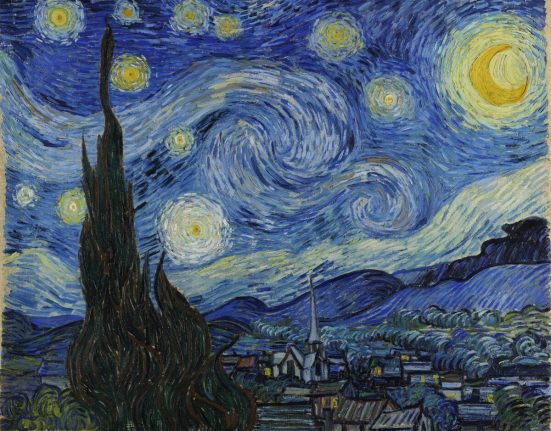
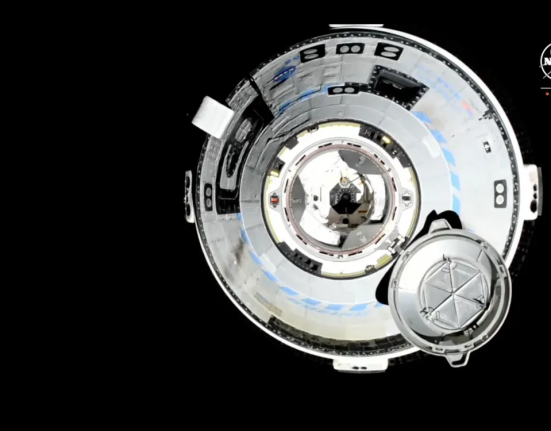
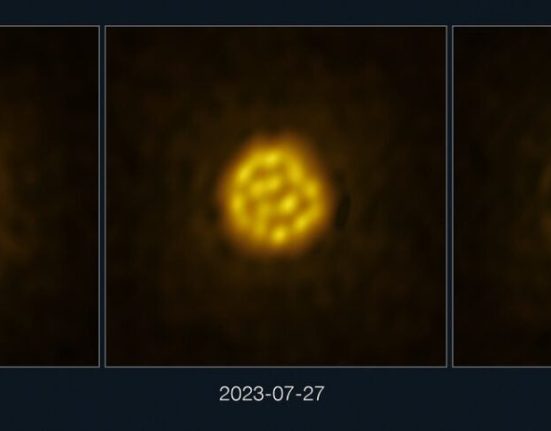
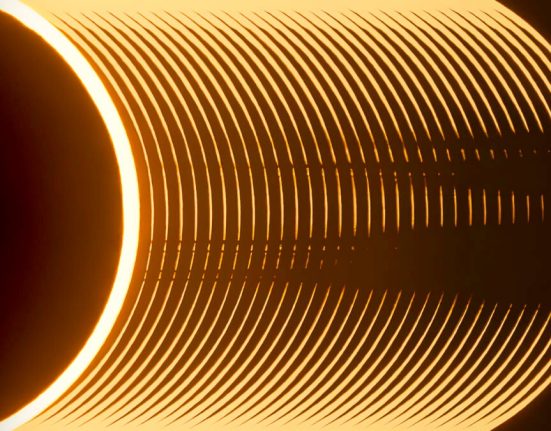
Leave feedback about this